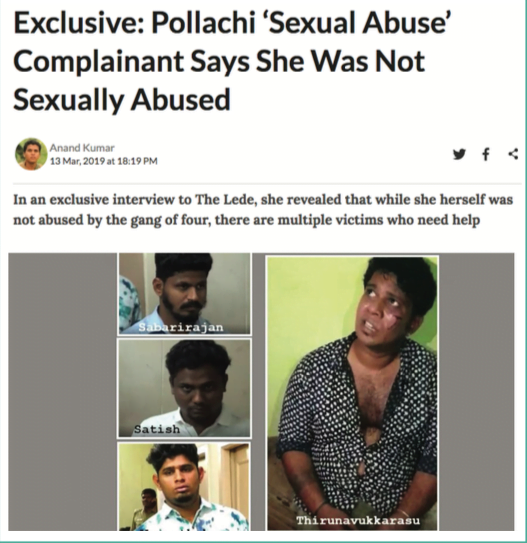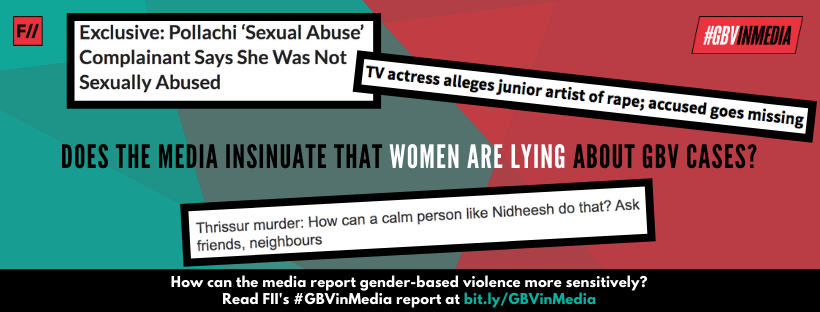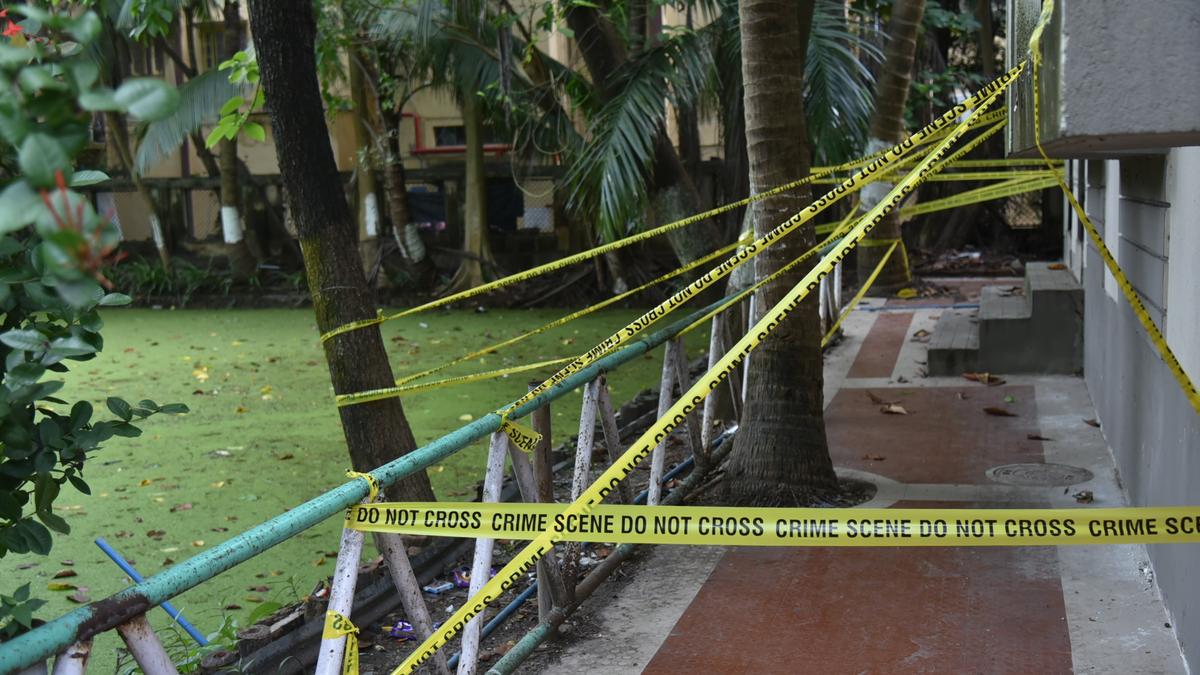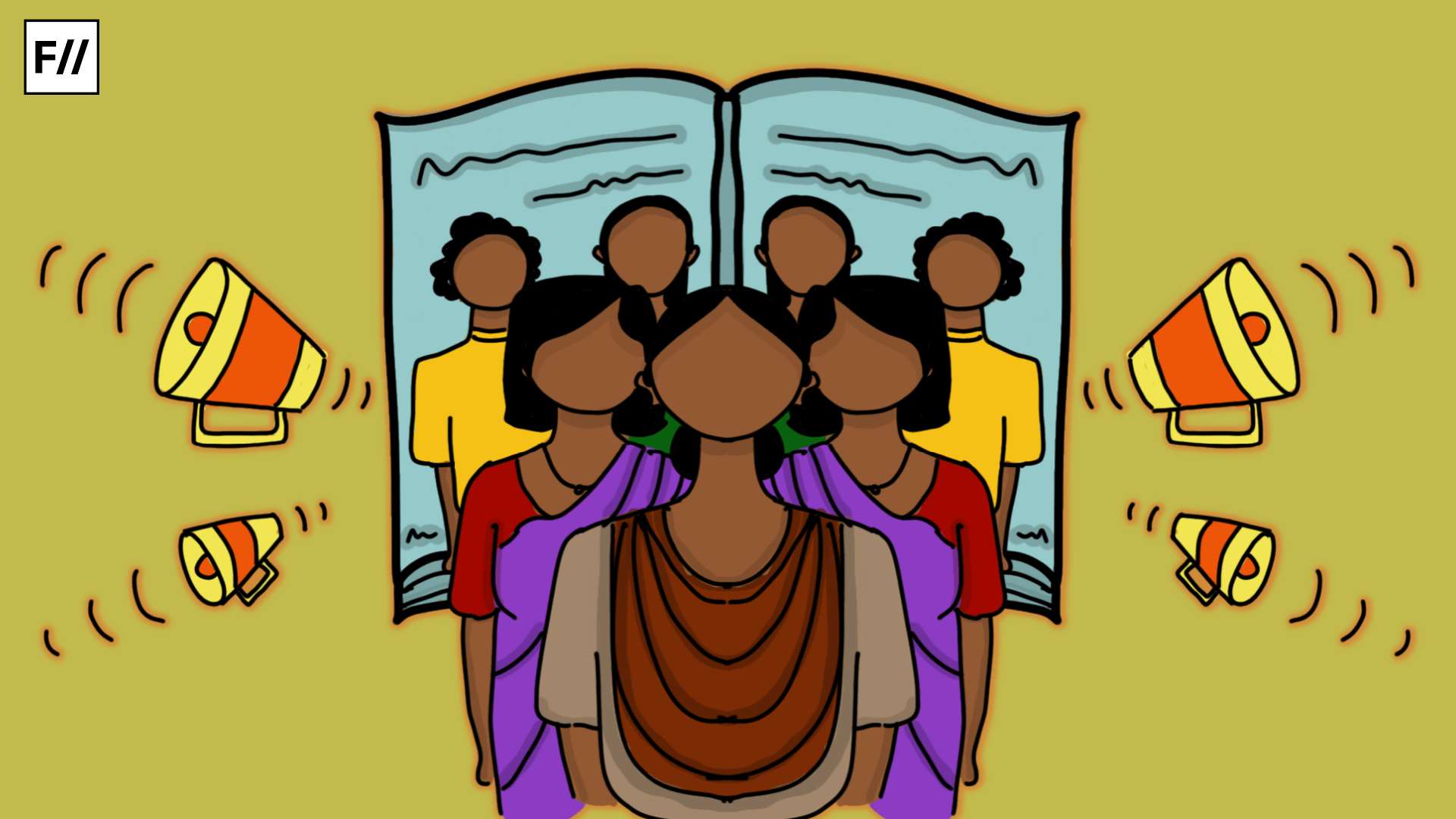In 2014, the Delhi Commission of Women put out a report stating that 53.2% of rape cases filed between April 2013-July 2014 were false. This statistic was cited gleefully by men’s rights activists and the like to decry that women speaking out about rape or sexual violence were, in all probability, lying or taking revenge on men. This sentiment is not new – women have constantly been disbelieved when speaking out about gender-based violence. One must only look at the recent Chinmayanand case as an example – where a college student accusing a powerful politician and godman of rape was put behind bars for defamation.
Upon further investigation of the statistic put out by the Delhi Commission of Women, it was found that all of the cases that were dismissed as “false”, were cases that simply never made it to trial, without analysing the reasons why. The statistic is more a reflection of the failure of the legal system to deliver justice to women rather than a question of the woman’s honesty. Additionally, many cases wherein women do admit to having falsely accused someone are a result of imbalanced power dynamics at play. One must remember that there are several tactics of intimidation and threat that the accused can employ in order to escape the consequence for their actions. In the past, women have been compelled to arrive at a “compromise” or even withdraw their case, lest them or their loved ones should be hurt. They have been bribed, or some have found the procedure to be too expensive for them to continue with the obligations of the case through until the end. Often, the time-consuming and tedious nature of the process is enough to dissuade them from continuing the case. In much more severe and haunting examples, the case has also been withdrawn because the woman has been forced into marriage with the aggressor.
However, the sentiment that most women are lying about rape cases persists, and is one of the key reasons that rape and other forms of gender-based violence is so alarmingly under-reported in our country.
women have constantly been disbelieved when speaking out about gender-based violence.
Most often, women have nothing to gain from false accusations but strong disapproval from society. In fact, estimates suggest that the number of unreported instances of harassment far outweigh those of false accusations. An estimated 99.1% of sexual violence cases are not reported, according to government data. This is owing to the immense stigma associated with being a victim of sexual crime, the question on character and the obsession with the preservation of chastity. There is thus no reason for us to dismiss all cases as attempts of women to just extort money or get attention, for us to underestimate the magnitude and frequency of such instances just yet. Without adequate investigation, it is not possible to get an accurate estimate of how many allegations are truly false, and how many were simply not taken further, beyond the filing of the complaint.
Despite these alternative explanations of so-called “false” reports, mainstream media continues to play a significant role in shaping society’s perception of women as liars, attention-seekers, and extortionists. A study by Pandit and Gilbertson found that 7.7 per cent of articles in English newspapers suggested that the survivor was lying, which tends to confirm the predisposition society has in placing little faith in women.
So, how does the media perpetuate this spectre of ‘false cases’? This article will explore how the vocabulary used in articles and the choice of information published influence the perception of readers about gender-based violence.
1. Use of the term ‘alleged’, and writing ‘rape’ in quotes

One can find many headlines saying that a woman was “allegedly” raped, which gives them a mocking tone, as if the woman is not to be taken seriously. While the use of this word might appear to be an almost negligible issue, it takes as little as one word to draw upon the pre-existing tendency society has to view women’s claims with suspicion. The use of the term “alleged” is understandable in that it is considered necessary to avoid the legal pitfalls of depicting a case as true while it is still in trial. However, there are better ways of writing these headlines, without taking away from the credibility of the woman. Framing headlines as “Man accused of rape”, or “Survivor reported that she has been raped” are good examples of neutral headlines.
When a headline puts the word rape in quotes, for e.g., ‘Woman “raped” at family function’, it gives the impression that the word ‘rape’ was only used by the woman, and that the reality of the situation is not as grave as she describes it to be. It portrays the woman as someone who is exaggerating the details of the event unnecessarily, and takes away from the magnitude of the crime. The claims of the woman are put under unjustified scrutiny because of this kind of framing, and her traumatic experience undermined.

The headline of the article above, for instance, blatantly implies that the survivor who spoke out against the blackmail and sexual abuse racket in Pollachi, Tamil Nadu, was lying. In reality, the complainant had always maintained that she had not been raped, but had been stripped naked and filmed without her consent. By twisting these words to say that ‘she had not been sexually abused’, while also putting ‘sexual abuse’ in quotes, the headline casts her testimony as falsehood. The images of the perpetrators included shows one of them in distress, further depicting them as wrongfully accused and in need of sympathy.
2. Moral policing of the survivor
It is not uncommon for a woman to be asked irrelevant details of her day when she reports a violent crime committed against her, and newspapers are guilty of inviting moral judgements of the readers by providing similar details as well. When describing an event, details are provided about the whereabouts of the woman, who she spoke to (whether she talked to strangers), what she was wearing, and what activities she was engaged in. If the article mentions, for example, the woman “bar-hopping” at a very late hour in the night, she is labelled “easy”, and this immediately calls upon the conservative thinking of many readers who will conclude that the woman was simply inviting trouble. Once again, it takes away the accountability from the aggressor and lays it with the woman, as it appears that she had created for herself a ripe opportunity for someone to assault her. It also perpetuates the harmful mentality that only “bad girls” get raped, as if all of them have done something to deserve it. When the reader is convinced that she is a “bad girl” with poor or “loose” character, s/he is less likely to believe that the woman was indeed a victim of violent assault.
3. The perpetrator as either a monster or a saint
Newspapers tend to define the aggressor either as a ruthless “monster” or as a “good” person who happened to turn violent in a brief lapse of judgement. On the one hand, characterising aggressors as a “monster” and painting a ghastly image of them takes attention away from the fact that “respectable” people are not immune to predatory tendencies, and that most violence takes place within the family, who we do not consider to be “monsters” to begin with. The idea of respectability itself is a social construct. When one is imagining a “monster”, s/he may not necessarily picture a man who is wealthy, educated, and belongs to a dominant caste. This kind of imagery reinforces existing (false) notions of class and caste hierarchy, and makes it difficult to believe the woman if the perpetrator does not fit the conventional “monster” image. Readers are more likely to consider her accusation a false one instead of investigating the case thoroughly and questioning whether the “respectable” man is truly innocent.

Also read: The Problem With The ‘Monster’ Theory Of Rape
On the other hand, many articles inform readers about the perpetrator’s personality and his otherwise “decent” behaviour. They list his achievements (star student, excellent grades!), his bond with his family (loving son, nurturing father), and his positive personality traits. Similarly, articles quote his loved ones and document their disbelief at the given circumstance: “How can a calm person like Nidheesh do that?”. This leads readers to sympathise with the perpetrator. It persuades them to believe that the woman must be falsely accusing him, if his family and neighbours claim that he was an otherwise good-natured person. Since this type of aggressor strays from the “monster” imagery, disbelief is a natural reaction of the readers to such cases. We must learn to judge aggressors not by their “nice” demeanour, but by the crimes they commit and the trauma they bring to the women who have suffered at their hands.

Disbelief towards the woman is damaging to the cause of getting her justice. Trying to substantiate incorrect information with incomplete statistics accelerates this process of growing disbelief and refusal to accept what the woman has been through. When the media reflects the kind of mindset possessed by a more traditional, conservative society, it contributes to the never-ending cycle of victim-blaming and victim-shaming. It is no wonder that police cases do not reach the court room, that “good guys” face a disproportionately small punishment for their horrendous crimes, and that existing power dynamics continue to subjugate the voice of women.
Additionally, these factors have the effect of demonising the woman and labelling her a liar and an extortionist at a time when she is perhaps most vulnerable. Therefore, it becomes crucial to identify how we are complicit in trivialising such issues and rectify them at the earliest.
Written in consultation with Asmita Ghosh, the lead researcher of the #GBVinMedia toolkit.
About the author(s)
Manasi is a Gender & Sexuality campaigner at Jhatkaa.org. She is the former Digital Editor at Feminism in India and a researcher in the field of women and work. She hopes to keep learning and unlearning about feminism and intersectionality, and to create meaningful impact through her work.





1)Dear NOW 66% of rapes are fake. 53% of fake rapes? That was in 2015. Don’t bullshit that most of rapes in India are genuine. Women destroy lives of innocent men by false rape accusations . Ignoring this fact shows are biased u are to men. Feminism in the past was about women empowerment , today it’s just an anti male propaganda.
2) About the term ‘alleged’ . U clearly don’t know the difference between ‘conviction’ and ‘allegation’. U can’t assume everyone accused of rape is a criminal. Most of them are innocent. A person is deemed ‘convicted’ only when the Judge convicts the accused in court of he is guilty. So don’t become act like a judge without Checking for evidence. We live in a country where innocent people go to jail and criminals roam freely. So don’t assume anyone arrested by police to be guilty of any crime.
3) what we need is a proper trained police and judiciary free from government intervention. So don’t focus on useless topics.
4) Men are discriminated in India. A women can jail a men by just complaining to the police without evidence. But the opposite is not true. Where’s the gender equality. Feminism in the past was about gender equality. Now it just wants ‘special rights’ for women by claiming that women are oppressed by men , which is stupid.
Feminism in the past was about women empowerment , today it’s just an anti male propaganda.
I Just want to be a girl so that i get 2 % reservation and can get admission in DU i got 87 percent in 12th but still didn’t got admission.
Go to Bihar , there 30% Government jobs are reserved for women.
DU has an affiliated girls college called Miranda house. U can go there.
Ma’am, do you know that all of the cases in 53.2% bracket were not due to inability to take them to the trial but of cases of cheating and deception portrayed as rape.
They were a huge burden and supreme court had to rule in 2019 that a girl who is an adult and had consensual sex whether or not on the promise of marriage cannot claim it as rape.Additionally,many cases where women do admit they had falsely accused is because they did. Is there any provision of punishment for false accusations of rape? No. I know the intimidation tactics but I do not generalize it by making assumptions on the pretext of gender about the power a person has and use it to project a particular gender as the opressor.
I agree with you on the part of media using clever use of words to manipulate mindsets of people, infact I saw examples right here, “good guys face a disproportionately small punishment”.Demonising women is bad , 100% but demonising men is crucial, right? This is the hypocrisy where when when reports suggest that men are the wrongdoers it is essential, but when it suggests women are wrongdoers it is demonization because according to a unreasonable analysis all women always speak the truth.Tell me is it on me or you to decide whether a person who is alleged of rape has actually done it or not or should we protect both sides and let courts decide it on the basis of evidence. It is essential to use the term ‘alleged’ because the courts haven’t ruled it on yet, innocent until proven guilty, does it alteast ring a bell?
I don’t know the actual statistics but as mention by you 53% of the cases were false so logically speaking when a woman goes on social media saying she was raped/sexually assaulted you should not blindly believe it cause more than half of the time its not true, now I’m not saying you shouldn’t believe her I’m saying you shouldn’t blindly believe her and unfortunately that’s not the case, her story is blindly believed by the masses. Anyone is labelled lair only after they were proved wrong I say this cause in cases like these people on SNS take the woman’s side before even the guy who she accuses is proven guilty so the whole labelling a woman a lair when she is vulnerable I should say….. is just not being properly informed and I also don’t get how woman can be vulnerable when the story she said was false and when the guy who is accused is proven innocent you don’t see the whole breaking news, feminists going crazy and people on social media going crazy drama going on cause it seems like these days feminism is about special treatment for women rather than equal rights. I think that’s the case with you too cause it seems like you are saying that men take the 53% thing and always use it against women, well that’s the case cause you should look at the statistics and be like “The probability for this story(I couldn’t find a better word) being fake is higher than the probability of it being true.” Even if the statistics don’t favor your opinion you just shouldn’t ignore it.
Lodging False criminal cases is a mushrooming menace. The ground reality on the percentage False Criminal cases and its ruining impact on victims falsely implicated is described in a book, NOT GUILTY: Fabricated Implication Report, which is published recently on this link. It is based on data, police reports and court decisions. It demonstrates how in very very large proportion the laws are being misused Very informative and interesting. It describes the terrible situation an innocent has to face happens from day a false FIR is registered against him.
https://www.amazon.in/dp/B08BK85GSY/ref=cm_sw_em_r_mt_awdb_t877EbE3QQMVS